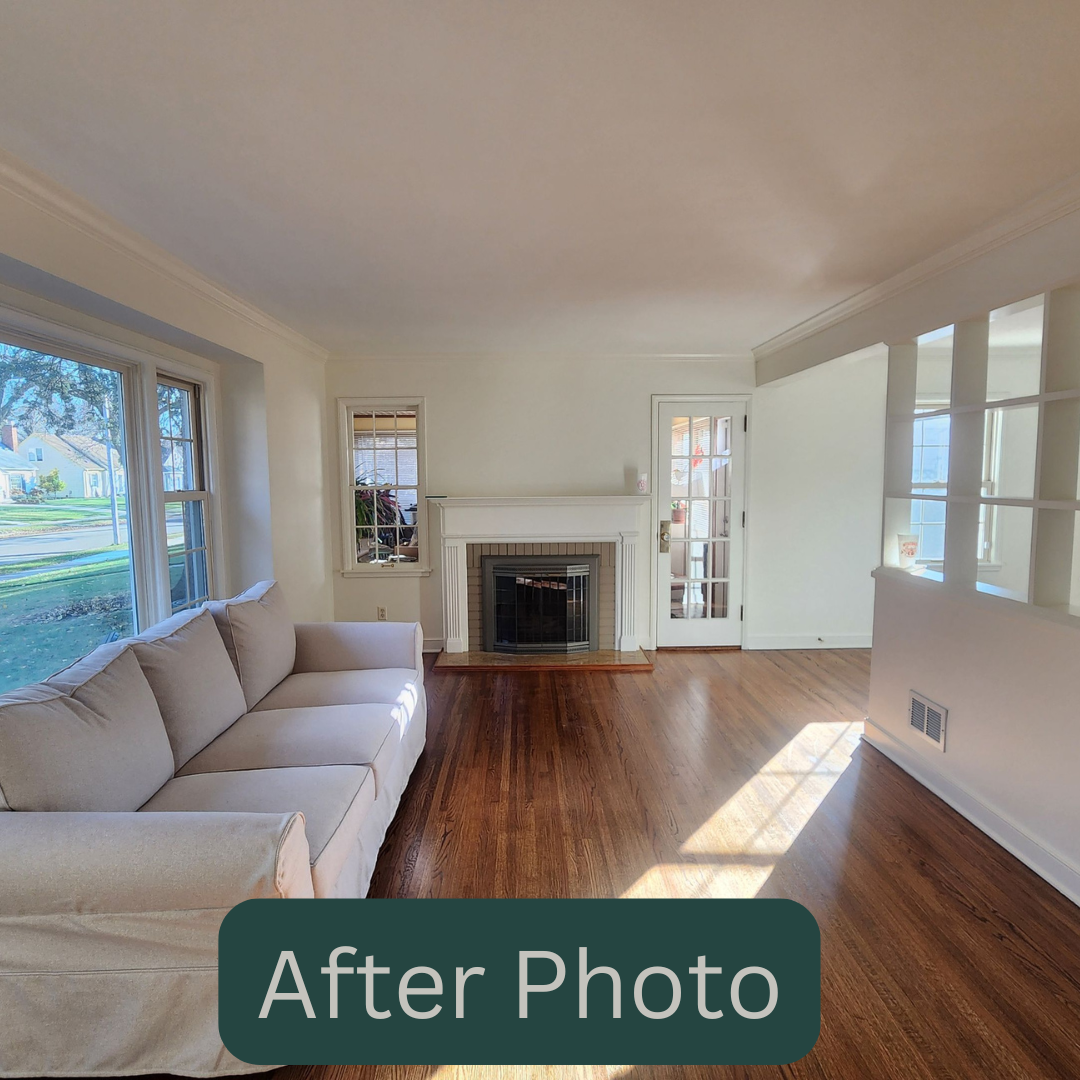When most Minneapolis homeowners think about interior painting, they picture fresh coats of paint rolling across bedroom walls or giving the living room a new color scheme. But what if we told you that the most dramatic transformations happen when you think beyond the obvious? At Headwaters Painting, we’ve discovered that the real magic lies in painting the unexpected surfaces that most people never consider touching with a brush.
The Psychology of Unexpected Color Placement
Before diving into specific techniques, it’s worth understanding why painting unconventional surfaces creates such powerful visual impact. Your brain processes familiar spaces through established patterns, which is why simply changing wall colors often feels incremental rather than transformational. However, when you introduce color in unexpected places, you create what designers call “visual interruption” – your eye is forced to reassess the entire space, making even subtle changes feel dramatically different.
This principle explains why painting a single piece of furniture can transform a room more effectively than repainting every wall. The unexpected element becomes a focal point that recontextualizes everything around it, creating the illusion of a complete room makeover with minimal effort and expense.
Ceiling Transformations: The Fifth Wall Revolution
Minneapolis homes, particularly those charming bungalows and colonials throughout the metro, often feature interesting ceiling architecture that gets overlooked. Your ceiling represents the largest uninterrupted surface in most rooms, yet it’s typically painted builder-grade white and forgotten.
Consider painting your ceiling a shade darker than your walls to create intimate, cocoon-like atmosphere – particularly effective in bedrooms and reading nooks. For dramatic effect, try painting the ceiling the same color as an accent wall, which creates a sophisticated wraparound effect that makes the room feel intentionally designed rather than arbitrarily painted.
Coffered ceilings present exceptional opportunities for creative color play. Paint the recessed areas in deep, rich colors while keeping the trim work bright, or reverse this approach for entirely different moods. We’ve seen stunning results painting coffered ceiling details in metallic finishes, which catch Minneapolis’s beautiful natural light throughout the day.
Tray ceilings offer another canvas for creativity. Paint the recessed center area in a complementary color to your walls, or use it as an opportunity to introduce a bold accent color without overwhelming the space. The elevated border naturally frames the color, containing its visual impact while maximizing its effect.
Trim and Millwork: The Details That Define Everything
Most homeowners default to white trim, but this represents a massive missed opportunity for creating sophisticated, intentional design. The trim work in your home – baseboards, crown molding, window casings, door frames – creates the architectural skeleton that defines your space’s character.
Painting trim in colors that complement rather than contrast with your walls creates a more sophisticated, European-inspired aesthetic. This technique works particularly well in Minneapolis homes with beautiful original millwork, where colored trim helps highlight rather than overshadow the architectural details.
For a more dramatic approach, consider painting trim in deep, rich colors like charcoal, forest green, or navy blue. This creates striking contrast while maintaining sophistication, and works especially well in homes with white or light-colored walls.
Door and window casings offer opportunities for subtle color gradation techniques. Paint the outer casing one color and the inner reveal a slightly different shade, creating depth and visual interest that makes windows and doorways feel more substantial and intentional.
Furniture Painting: Instant Room Transformation
Built-in furniture and cabinetry represent some of the highest-impact painting opportunities in your home. These pieces typically occupy significant visual real estate, making them powerful tools for room transformation.
Kitchen islands, for instance, can be painted in bold colors that complement your overall color scheme while creating a focal point that anchors the entire space. We’ve seen remarkable transformations where homeowners painted their kitchen island in deep navy or forest green, instantly elevating the kitchen’s sophistication level.
Built-in bookcases and entertainment centers offer exceptional opportunities for creative color application. Consider painting the interior back walls of bookcases in rich, jewel tones while keeping the exterior framework neutral. This creates beautiful depth and makes displayed items pop while maintaining the built-in’s integration with the room.
Bathroom vanities represent another high-impact opportunity. Most Minneapolis homes feature standard builder-grade vanities that can be completely transformed with paint. Choose colors that complement your bathroom’s tile and fixtures while adding personality that reflects your style.
Staircase Drama: Vertical Color Statements
Staircases offer unique opportunities for creative paint application that can transform your home’s entire flow and feel. The vertical nature of staircases means that color choices here create impact that extends beyond the immediate area, influencing how people experience moving through your home.
Painting stair risers in alternating colors creates playful visual rhythm while maintaining safety and functionality. This technique works particularly well in homes with children, where the colorful pattern adds whimsy while helping define each step clearly.
For more sophisticated approaches, consider painting the entire staircase structure – risers, treads, and railings – in a single bold color that contrasts with surrounding walls. This creates a sculptural element that becomes a focal point rather than just functional infrastructure.
Stairway walls offer opportunities for dramatic color application since they’re typically viewed from multiple angles and distances. Consider using the stairway as an opportunity to introduce your home’s boldest color choice, since the transitional nature of the space allows for more dramatic decisions than in primary living areas.
Creative Accent Techniques: Beyond Single Colors
Once you’ve mastered painting unexpected surfaces, consider advanced techniques that create even more sophisticated effects. Color blocking involves painting geometric shapes or sections within larger surfaces, creating modern, artistic effects that feel custom and intentional.
Ombre effects, where color gradually transitions from light to dark, work beautifully on feature walls, staircase walls, or even ceiling treatments. This technique requires more skill but creates stunning results that feel professionally designed.
Two-tone techniques, where you divide surfaces horizontally or vertically with different colors, can make rooms feel taller, wider, or more intimate depending on how you apply them. Paint the lower portion of walls in darker colors and upper portions in lighter shades to create the illusion of higher ceilings.
Practical Considerations for Unconventional Painting
When painting unexpected surfaces, preparation becomes even more critical than standard wall painting. Different materials require specific primers and paint types to ensure proper adhesion and durability.
Furniture and trim often require specialized primers, particularly if you’re painting over existing finishes or going from dark to light colors. Oil-based primers typically provide better adhesion and blocking power for these applications, though high-quality water-based alternatives now offer comparable performance with easier cleanup.
Consider the room’s lighting when choosing colors for unexpected surfaces. Minneapolis homes often feature beautiful natural light, but the direction and quality of that light changes throughout the day. Test your chosen colors in the actual space and observe them at different times to ensure they create the desired effect under various lighting conditions.
Think about maintenance and durability when painting high-touch surfaces like trim, stairs, and furniture. These areas typically require more durable paint finishes and may need more frequent touch-ups than walls.
Color Psychology and Unexpected Applications
Different colors create different psychological effects, and these effects can be amplified when colors appear in unexpected places. Blues and greens typically create calming effects, but when applied to ceilings, they can make spaces feel more expansive and sky-like. Warm colors like reds and oranges create energy and intimacy, but when used on trim or furniture, they can warm up neutral spaces without overwhelming them.
Consider the room’s purpose when choosing colors for unconventional applications. Bedrooms benefit from calming colors on unexpected surfaces, while social spaces like living rooms and kitchens can handle more energetic color choices.
Integration with Existing Decor
The most successful unconventional painting projects integrate seamlessly with existing furniture, artwork, and decorative elements. Before choosing colors, inventory your existing pieces and consider how new paint choices will complement or contrast with them.
Use the 60-30-10 rule as a starting point: 60% neutral colors, 30% secondary colors, and 10% accent colors. When painting unexpected surfaces, you’re typically working in the 30% and 10% categories, which means these choices should complement your room’s dominant neutral palette.
Seasonal Considerations for Minneapolis Homes
Minneapolis’s distinct seasons create unique considerations for interior color choices. During long winter months, warm colors on unexpected surfaces can create cozy, welcoming atmospheres that combat seasonal affective disorder. Conversely, cooler colors can provide refreshing contrast during humid summer months.
Consider how natural light changes throughout the year in your specific home. South-facing rooms may benefit from cooler colors on unexpected surfaces to balance intense summer light, while north-facing rooms might benefit from warmer accents to compensate for limited natural light.
Professional vs. DIY Considerations
While many unconventional painting projects are well-suited for DIY execution, others benefit from professional expertise. Ceiling painting, particularly in rooms with high or vaulted ceilings, often requires specialized equipment and techniques for safe, even application.
Complex color-blocking or ombre effects typically require professional skills to achieve smooth, professional-looking results. Similarly, painting furniture or built-ins often involves surface preparation and finishing techniques that benefit from professional experience.
At Headwaters Painting, we often work with homeowners who want to tackle some elements themselves while leaving more complex aspects to professionals. This collaborative approach allows homeowners to save money while ensuring the most challenging aspects are executed properly.
Your Home’s Hidden Potential
The most dramatic interior transformations often come from painting the surfaces that everyone else ignores. By thinking beyond walls and considering ceilings, trim, furniture, and architectural details as opportunities for creative color application, you can create sophisticated, personalized spaces that reflect your unique style while maximizing your painting budget’s impact.
Minneapolis homes, with their diverse architectural styles and beautiful natural light, offer exceptional opportunities for creative painting approaches. Whether you’re working with a classic bungalow’s original millwork or a modern home’s clean lines, painting unexpected surfaces allows you to honor your home’s character while making it unmistakably yours.
The key to success lies in thoughtful planning, proper preparation, and understanding how color psychology works in three-dimensional spaces. Start with one unexpected element – perhaps a boldly colored ceiling in a powder room or painted trim in a hallway – and experience how dramatically it transforms your space. Once you see the impact, you’ll never look at interior painting the same way again.
Your home’s transformation is waiting in the surfaces you haven’t considered painting yet. The question isn’t whether you should paint beyond your walls – it’s which unexpected surface you’ll transform first.

